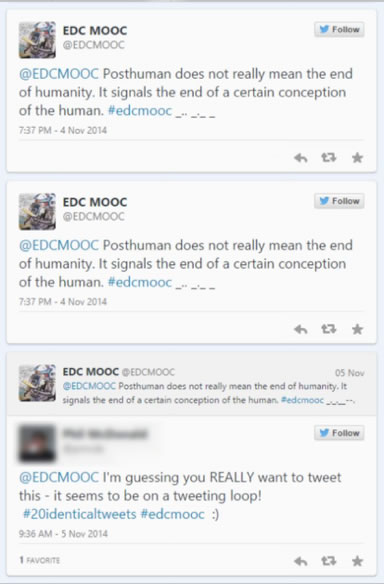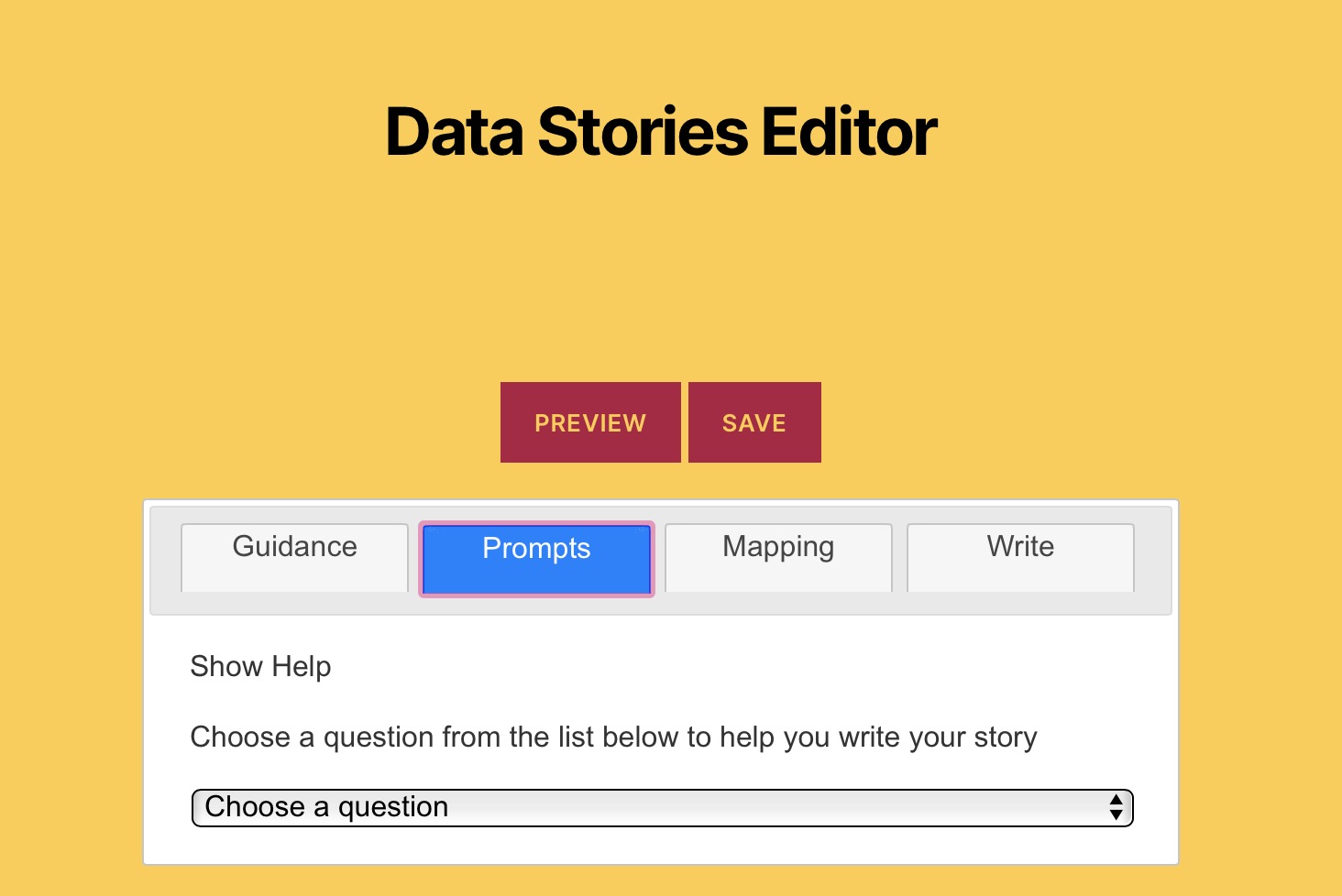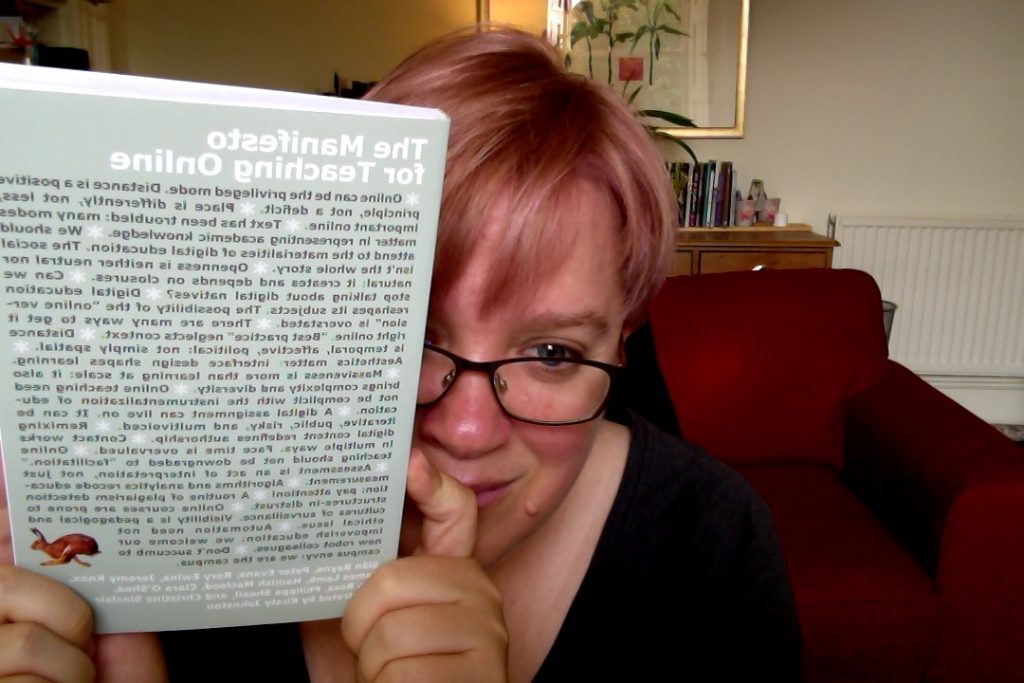
I’m in the process of writing a book about speculative methods and pedagogies (due from Routledge in 2022). As part of the writing process I’ve been enjoying engaging with recent literature that builds on ideas I wrote about in my 2017 paper on speculative method in digital education research (Ross, 2017). This post is a little taster of the diverse contexts of use of speculation and not-yetness (Ross and Collier, 2016), and how these concepts are being developed by others.
Speculative methods for research and teaching are aimed at envisioning or crafting futures or conditions which may not yet currently exist, to provoke new ways of thinking and to bring particular ideas or issues into focus. Michael (2012) describes them as “’inventive problem making’ in which the parameters of the issue are reconfigured” (p.536). In their canonical speculative design text, Dunne and Raby (2013) identify speculative design as a way to use futures as “a medium to aid imaginative thought… [to] loosen, even just a bit, reality’s grip on our imagination” (p.3). Enactments of speculative methods are found in critical design, speculative design, inventive method and design fiction, and across the social sciences and art and design disciplines. Speculative methods are often described as research methods, but they are equally suited to teaching contexts in a range of different disciplines, with recent published work highlighting their use in social anthropology, law, education and art. Plus there is some great work being done on speculative engagements in informal learning contexts like museum and galleries.
I’m seeing a lot of richness and diversity in the literature around speculative approaches, and increasing interest in these. I think this is because their close couplings of provocation, engagement and inquiry are a good fit with the complex knowledge-production spaces of learning and education and the wicked problems we are facing. As George Veletsianos (2020) notes:
the current state of education, at all levels, is situated within a context of ever-evolving social, cultural, political, and technological shifts, [so] we face an urgent need to engage with uncertainty on multiple levels. The use of speculative methods, therefore, may enable us to offer guidance when making current decisions related to the future of higher education, and to explore what may or may not be possible in different contexts. (p.605)
Of the many excellent things I’ve been reading, I want to highlight four papers that have developed my previous work on speculative method in generative ways.
Osborn, J.R., Barba, E., Henderson, G.E., Strong, L.M. and Kadish, L.H. (2019) ‘The Pilgrimage Project: Speculative design for engaged interdisciplinary education’, Arts and Humanities in Higher Education, 18(4), pp. 349–371. Osborn et al (2019) describe their pedagogical approach to engaging with historical materials in a speculative manner as “retrofuturology”. They embarked on a year-long “experiment in interdisciplinary pedagogy” with a focus on Georgetown University’s Old North Building. The Pilgrimage project brought together students and teachers from six courses on topics including creative writing, media production and museum studies, and “applied the not-yetness of speculative method [to explore] how technological, artistic, and creative projects can inspire and maintain student engagement when directed toward a topic of shared concern” (p.351). Using approaches such as mediated collaboration (where student work from one course was used as prompts for another), students ultimately produced a public exhibition.
Gallagher, M. and Breines, M. (2021) ‘Surfacing knowledge mobilities in higher education: reconfiguring the teacher function through automation’, Learning, Media and Technology, 46(1), pp. 78–90.
and
Breines, M.R. and Gallagher, M. (2020) ‘A return to Teacherbot: rethinking the development of educational technology at the University of Edinburgh’, Teaching in Higher Education, 0(0), pp. 1–15.
Working with university students, faculty and staff to investigate the notion of automation and the ‘teacher function’, this project used speculative co-design methods to understand perspectives of teachers, staff and students and to produce use cases for teacherbots at the University of Edinburgh. The researchers facilitated prototype-building workshops which, combined with interview data (Gallagher and Breines, 2021), generated 85 discrete use-cases for instances of automation in a future university. The project developed a framework for evaluating teacherbot designs, moving away from efficiency as a core value, and criteria were the extent to which the designs were pedagogically generative, expressed university values, had potential to positively influencing the student and teaching experience, were ethical, were supportive of teacher professionalism, and were technologically feasible (Breines and Gallagher, 2020, p. 8). Examples of teacherbot designs produced through participatory design sessions included bots for helping students identify their knowledge of a subject before a course began, creating peer groupings based on sophisticated criteria, generating discussion, preparing students for tutorials, and collecting resources from students to help co-create knowledge (pp.9-10).
Smythe, S., Pelan, D. and Breshears, S. (2018) ‘The LinkVan Project: Participatory Technology Design in Vancouver’, Language and Literacy, 20(3), pp. 9–25. The authors found speculative analysis essential to grapple with the “’wicked’ and entangled issues” (p.21) that emerged from their project examining a mobile van for supporting digital literacies amongst Vancouver, Canada’s low-income and homeless population. These issues included problems of scarcity, the slippage of digital inclusion to a more radical demand for more equitable digital landscapes, and the tensions between anonymity and relationality in providing community services. For them, the ‘not-yetness’ of the socio-technical landscape they were working in required reaching beyond the technological to a more experimental way of thinking about learning and resource sharing (p.22).
Ehret, C. and Čiklovan, L. (2020) ‘How speculative designs produce new potentials for education research in digital culture’, Discourse: Studies in the Cultural Politics of Education, 41(5), pp. 708–722. doi:10.1080/01596306.2020.1774713. Ehret and Čiklovan (2020) built on a traditional multimodal discourse analysis of toxic digital discourse on the Twitch.tv livestreamed gaming platform to produce a ‘critical remix video’ to synthesise toxic content and then “repurpose[] and reconfigure[] those media in order to communicate messages that expose pernicious ideologies and behaviors”. They add to speculative methods in education a focus on emerging technocultures, arguing that pedagogical development should flow from “emerging experiences of digital, social life” (p.721). For them, speculative design experiments need to develop “new pedagogic potentials that themselves may inform social change through youths’ expanded and nuanced repertoire of digital practices in the future” (ibid).
From these authors, I’m taking some key points forward into development of a speculative framework for digital learning futures in the book. I’m really grateful to them for their work and for these great papers.
- The value of considering what kinds of futures are productive to speculate with (for example, Breines and Gallagher disentangled a particular form of ‘dumb’ automation from the wider AI futures discourse to explore how it could be used to engage teachers and students as designers).
- A broad view of what ‘counts’ as education futures and how these are shaped by practices and technologies beyond formal settings – like gaming-related digital spaces.
- The role of speculative methods in analysing complex issues around inclusion and relationality – and with tensions that arise through this complexity.
- Ways of structuring and scaffolding speculative teaching methods – this is going to be an important part of the book, and seeing how other teachers and researchers have grappled with pedagogical dimensions of speculation (especially around interdisciplinarity and collaboration) is really valuable.
References
Breines, M.R. and Gallagher, M. (2020) ‘A return to Teacherbot: rethinking the development of educational technology at the University of Edinburgh’, Teaching in Higher Education, 0(0), pp. 1–15.
Dunne, A. and Raby, F. (2013) Speculative everything: design, fiction, and social dreaming. Cambridge, Massachusetts; The MIT Press.
Ehret, C. and Čiklovan, L. (2020) ‘How speculative designs produce new potentials for education research in digital culture’, Discourse: Studies in the Cultural Politics of Education, 41(5), pp. 708–722.
Gallagher, M. and Breines, M. (2021) ‘Surfacing knowledge mobilities in higher education: reconfiguring the teacher function through automation’, Learning, Media and Technology, 46(1), pp. 78–90.
Michael, M. (2012) ‘“What Are We Busy Doing?” Engaging the Idiot’, Science, Technology & Human Values, 37(5), pp. 528–554.
Osborn, J.R. et al. (2019) ‘The Pilgrimage Project: Speculative design for engaged interdisciplinary education’, Arts and Humanities in Higher Education, 18(4), pp. 349–371.
Ross, J. (2017) ‘Speculative method in digital education research’, Learning, Media and Technology, 42(2), pp. 214–229.
Ross, J. and Collier, A. (2016) ‘Complexity, mess, and not-yetness: Teaching online with emerging technologies’, Emergence and Innovation in Digital Learning: Foundations and Applications, pp. 17–33.
Veletsianos, G. (2020) ‘How should we respond to the life-altering crises that education is facing?’, Distance Education, 41(4), pp. 604–607. doi:10.1080/01587919.2020.1825066.





